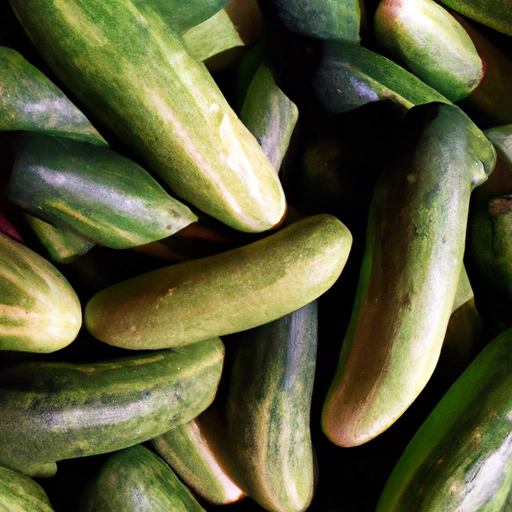Kirby Cucumber
Description

Kirby cucumbers, also known as pickling cucumbers, are a small and crunchy variety of cucumber recognized for their bumpy skin and robust flavor. Unlike the common garden cucumber, Kirbies are shorter and more irregular in shape, typically measuring around 3 to 6 inches (7.6 to 15.2 cm) in length and 1 to 2.5 inches (2.5 to 6.4 cm) in diameter with a weight of roughly 4 to 6 ounces (113 to 170 grams). Their firm texture and minimal seeds make them an ideal choice for pickling, although they can also be enjoyed fresh.
Common uses
Kirby cucumbers are primarily used for pickling due to their thick, snappy skin which absorbs flavors well and their firm flesh that remains crisp after the pickling process. However, their versatility also makes them suitable for fresh eating in salads, as a crunchy snack, or served with dips. Moreover, they can be used as a garnish or added to sandwiches and burgers for an extra bit of texture and flavor.
Nutritional value
Calories
A typical Kirby cucumber contains approximately 15 calories (62.76 kJ) per 100 grams.
Protein
They provide about 0.65 grams of protein per 100 grams.
Fat
Fat content is negligible, with only around 0.11 grams per 100 grams.
Carbohydrates
Carbohydrates are minimal as well, with about 3.63 grams per 100 grams.
Vitamins
Kirby cucumbers are a good source of Vitamin K, providing 16.4 micrograms per 100 grams, and also contain Vitamin A and Vitamin C.
Minerals
They offer minerals such as potassium, with 147 milligrams per 100 grams, and also have small amounts of magnesium, calcium, and iron.
Health benefits
Kirby cucumbers contribute to hydration thanks to their high water content, and the presence of antioxidants like beta-carotene and flavonoids can help fight inflammation. The fiber in Kirby cucumbers may aid in digestion and weight management, while the potassium content can support heart health by maintaining healthy blood pressure levels.
Potential risks
While generally safe for consumption, Kirby cucumbers should be washed thoroughly to remove any potential pesticides. Overconsumption may lead to excessive vitamin K intake for those on blood thinners, and some people might experience digestive issues if they are sensitive to cucurbitacins, compounds found in the cucumber family.
Common recipes
Common recipes include classic dill pickles, bread and butter pickles, relishes, and salads such as cucumber-tomato or cucumber-yogurt salads.
Cooking methods
Kirby cucumbers are most often used in raw applications or pickled using various methods such as brining or fermenting. They can also be lightly sautéed or grilled for a warm dish.
Pairing with other ingredients
They pair well with dill, garlic, vinegar, onions, tomatoes, yogurt, and creamy dressings.
Summary
Kirby cucumbers are a versatile and nutritious ingredient suitable for a variety of culinary applications, from traditional pickles to fresh salads. With their distinct texture and ability to absorb flavors, they are a favorite amongst home cooks and chefs alike. Whether you’re looking to add a crunch to your meals or embark on home pickling, Kirby cucumbers are an excellent choice.